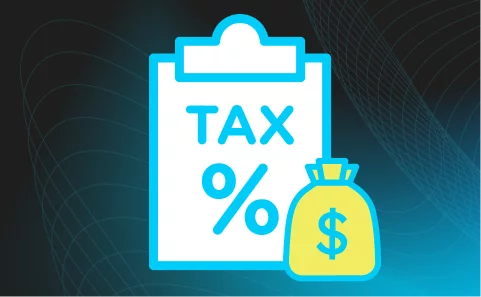Blog
Scenario Modeling for Tax Impact: A New Role for Fund Controllers

BY Scott Turner
May 29
Scenario Modeling for Tax Impact: A New Role for Fund Controllers
How the Role of Fund Controllers Is Evolving
Traditionally, fund controllers have been the stewards of accurate financial reporting, focusing on historical data and compliance. However, the landscape is shifting. With the increasing complexity of fund structures and investor demands, controllers are now expected to play a proactive role in strategic planning. This evolution includes anticipating tax events and their impacts on investors, requiring collaboration with tax, investor relations (IR), and deal teams.
According to the Financial Executives International (FEI), controllers are increasingly involved in forecasting and strategic decision-making processes, highlighting the need for a broader skill set beyond traditional accounting.
What Is Tax Scenario Modeling?
Definition and Purpose
Tax scenario modeling is a forward-looking analytical process that uses real-time fund data to project potential tax outcomes. It enables fund controllers to assess how various financial decisions—such as distributions, allocations, exits, and timing—affect tax implications for the fund and its investors.
This approach aligns financial strategies with tax efficiency, ensuring that decisions made today do not lead to unforeseen tax liabilities in the future.
Key Inputs for Effective Scenario Modeling
To conduct meaningful tax scenario modeling, controllers should consider:
- Capital Accounts: Current balances and projected changes.
- Ownership Structure: Details of each investor’s stake and any preferential terms.
- Preferred Returns or Waterfalls: Agreements that dictate the distribution of profits.
- Projected Deal Activity or Exits: Anticipated transactions that could impact tax positions.Carta+1InsightSoftware+1
By integrating these inputs, controllers can create comprehensive models that inform strategic decisions.
When Fund Controllers Should Use Scenario Modeling
Tax scenario modeling is particularly valuable during:
Capital Restructuring or New Rounds of Funding
Assessing the tax implications of bringing in new capital or altering the fund’s capital structure.
Anticipated LP Redemptions or Exits
Evaluating the tax consequences of investors withdrawing from the fund.
Partial Realizations or Recapitalizations
Understanding how partial asset sales or refinancing impact tax liabilities.
Pre-Distribution Tax Planning
Planning distributions to optimize tax outcomes for the fund and its investors.
Evaluating Investor-Specific Side Letter Impact
Analyzing how unique investor agreements affect overall tax planning.
Implementing scenario modeling in these situations allows controllers to proactively manage tax risks and align strategies with investor expectations.
Benefits of Tax Impact Forecasting for Fund Teams
Incorporating tax scenario modeling into fund operations offers several advantages:
- Enhanced LP Communication: Providing investors with clear insights into potential tax outcomes builds trust and transparency.
- Reduced Year-End Surprises: Anticipating tax liabilities minimizes unexpected issues during tax season.
- Improved Alignment Between Accounting and Tax: Ensuring that financial reporting and tax planning are synchronized.
- Informed Decision-Making During Exit Events: Evaluating tax consequences of exits leads to better strategic choices.
These benefits contribute to more efficient fund management and stronger investor relationships.
Tools and Techniques for Scenario Modeling
Fund controllers can leverage various tools and techniques for effective scenario modeling:
- Capital Account Modeling in Fund Accounting Platforms: Utilizing software to simulate changes in capital accounts.
- Layering Tax Logic into Cash Flow and Allocation Projections: Integrating tax considerations into financial models.
- Using Excel-Based Models vs. Platform-Native Modules: Choosing between customizable spreadsheets and integrated software solutions.
- Integration with Tax Compliance and Reporting Software: Ensuring that scenario models align with tax reporting requirements.
Selecting the appropriate tools depends on the fund’s complexity and the controller’s specific needs.
Internal Collaboration to Get It Right
Effective tax scenario modeling requires collaboration across various teams:
- Tax Leads: Partnering to validate modeling assumptions and ensure compliance.
- Investor Relations (IR): Coordinating to communicate tax implications to investors.
- General Partners (GPs): Sharing insights to inform strategic decision-making.
By fostering cross-functional collaboration, controllers can ensure that scenario models are accurate, comprehensive, and aligned with the fund’s objectives.
Final Thoughts: The Future of Fund Control Is Forward-Looking
The role of fund controllers is expanding beyond traditional financial reporting to encompass strategic tax planning and scenario modeling. By adopting these forward-looking practices, controllers add significant value to fund operations, enhance investor confidence, and position themselves as integral contributors to the fund’s success.
Embracing tax scenario modeling is not just a trend—it’s a necessary evolution in the dynamic landscape of fund management.